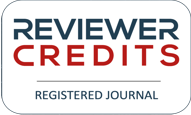The Effect Of Phototherapy (24 Hours) Towards Jaundice Degrees Of The Newborn In Hospital NICU West Nusa Tenggara Province
(1) Health Science Institute of Yarsi Mataram
(2) Health Science Institute of Yarsi Mataram
(3) Health Science Institute of Yarsi Mataram
(*) Corresponding Author
Abstract
Background: Aximately 60% of normal birth infant become jaundiced in the first week of birth. The incidence of jaundice in the West Nusa Tenggara hospital in 3 years later (2012-2014) there were 1166 cases. Phototherapy of total serum bilirubin (TSB) increased. Clinical trials have validated the efficacy phototherapy in reducing excessive unconjugated hyperbilirubinemia, and its implementation has been drastically confine the use of exchange transfusion (Bhutani, 2011). Objective:The purpose of this study was to determine the degree of jaundice before and after phototherapy, as well as analyze the influence phototherapy before and after the degree of jaundice in the newborn. Method:This type of research is pre-experimental research design using the approach one group pre-test and post-test design. The study population was all jaundice infants who were treated at Hospital NICU room in West Nusa Tenggara Provence in May 2016. The sample was 15 respondents with acsidental sampling techniques. The method of data analysis with descriptive percentage univariate and bivariate analysis with test of rank correlation test (spearman) obtained significance value p = 0.000 < 0.05 and spearman correlation coefficients obtained by value p = 0.025 which means there is a strong correlation between the influence of phototherapy (24 hours) the degree of jaundice in the newborn. Result: The results were obtained degree of jaundice before phototherapy is as many as 9 degree 4 respondents (60%) and as many as 6 degrees five respondents (40%). After 24 hours phototherapy all respondents decreased the degree of jaundice and most have some degreen of jaundice 3 of 10 respondents (66,7%) by 5 respondents (33,3%). Discussion:Recommendations can be given is a gift phototherapy to decrease the degree of jaundice.
Keywords
Full Text:
PDFReferences
Asrining S.,St.Handayani, Heni Nurkusuma (2007). Perawatan Bayi resiko Tinggi. EGC. Jakarta
Bhutani, V. (2011). ―Phototherapy to Prevent Severe Neonatal Hyperbilirubinemia in the Newborn Infant 35 or More Weeks of Gestation‖. Journal of the American Academy of Pediatrics, Vol. 128, No. 4, PP e1046 - e1052, http://pediatrics.aappublicatio ns.org/content/128/4/e1046. Diakses 26 Maret 2014
Dewi (2011). Asuhan Neonatus Bayi dan Anak Balita. Salemba Medika Jakarta
Grohmanna, K., Roser, M., Rolinski, B., Kadow, I., Müller, C., Goerlach-Graw, A., Nauck,M., Küster, H. (2006). “Bilirubin Measurement for Neonates: Comparison of 9 Frequently Used Methods”. Journal of the American Academy of Pediatrics, Vol. 117, No.4, PP 1174 — 1183 http://pediatrics.aappublicatio ns.org/content/117/4/1174. Diakses 26 Maret 2014
Hindryawati, Wiwin. (2011). Media Sehat ( PPNI ). Edisi 35., Arfmedia. Semarang.
Hidayat A.A (2007). Metode Penelitian Kebidanan dan Tekhnik Analisis Data. Salemba Medika. Surabaya.
Health Technology Assesment. Buku panduan tatalaksana bayi baru lahir di rumah sakit. HTA Indonesia 2010. Jakarta: Unit pengkajian teknologi kesehatan direktorat jenderal pelayanan medik departemen kesehatan RI. 2010
Komite Medik. (2010). Prosedur Tetap Perinatal Resiko Tinggi RSUD Provinsi NTB. Tidak dipublikasikan
Kosim, S., Yunanto, A., Dewi, R., Sarosa, G., Usman, A. (2012). Buku Ajar Neonatologi. Edisi 1. Cetakan 3., Ikatan Dokter Anak Indonesia (IDAI). Jakarta
Kosim, S., Soetandio, R., Sakundarno, M. (2008). ―Dampak Lama Fototerapi Terhadap Penurunan kadar Bilirubin Total pada Hiperbilirubinemia Neonatal”. Jurnal Sari Pediatrik. Vol. 10. No. 3. Hal. 201-6 http://saripediatri.idai.or.id/pdf ile/10-3-10.pdf , Diakses tanggal 26 Maret 2014
Keren, R., Xianqun Luan., Friedman, S.,Saddlemire, S., Cnaan, A., Bhutani, V. (2008). ―A Comparison of Alternative Risk-Assessment Strategies for Predicting Significant Neonatal Hyperbilirubinemia in Term and Near-Term Infants“.Journal of the American Academy of Pediatrics, Vol.121, No.1, PP e170 – e179 http://pediatrics.aappublicatio ns.org/content/121/1/e170. Diakses tanggal 26 Maret 2014
Maisels J., McDonagh, A. (2008). “Phototherapy For Neonatal Jaundice‖. Journal Nursing England Medical. No.358 pp 920 – 928
Newman, T., Kuzniewicz, M., Liljestrand, P.,Soora Wi, McCulloch, C., Escobar, G. (2009). ―Numbers Needed to Treat With Phototherapy According to American Academy of Pediatrics Guidelines‖. Journal of the American Academy of Pediatrics. Vol. 123, No. 5, PP 1352 – 1359 http://pediatrics.aappublicatio ns.org/content/123/5/1352. Diakses tanggal 26 Maret 2014.
Nursalam, Siti Pariani (2008). Konsep & Penerapan Metodologi Penelitian Ilmu Keperawatan. Salemba Medika. Jakarta.
Notoatmodjo.S (2010). Metodologi Penelitian Kesehatan. Rineka Cipta. Jakarta
Rubaltelli FF, Zanardo V, Granati B. (2005;61:838-41). Effect of various phototherapy regimens on bilirubin decrement. Pediatrics
Saifudin. A.B (2006). Pelayanan Kesehatan Maternal dan Neonatal.Yayasan Bina Pustaka Sarwono Prawirohardjo. Jakarta
Surasmi, Asrining (2008). Perawatan Bayi Resiko Tinggi. EGC. Jakarta.
Sastroasmoro, S. (2005). Tata laksana ikterus neonatorum, www.pediatrik.com, 27 Maret 2014 jam 21.00 WIB.
Sudarmanto, B. (2011). Pedoman Pelayanan Medis Ikatan Dokter Anak Indonesia. Jilid 2. Cetakan 1., Ikatan Dokter Anak Indonesia. Jakarta.
Sugiyono. (2010). Statistika Untuk Penelitian. Cetakan 16., Alfabeta. Bandung
Sugiyono. (2011). Metode Penelitian Kuantitatif Kualitatif dan R&D. Cetakan 14., Alfabeta. Bandung.
Setiadi. (2007). Konsep dan Penulisan Riset Keperawatan. Graha Ilmu. Jakarta.
Uhudiah, Uut. (2003). Pemberian Terapi Sinar Berdasarkan Penilaian Klinis Pada Neonatus Dengan Hiperbilirubinemia. Makalah disajikan dalam Kongres Nasional VIII Perinasia Dan Simposium Internasional. Perinasia, Medan, 5 – 8 Oktober.
Vreman H, Wong R, Stevenson D (2004). Phototherapy: current methods and future directions. Semin perinatol
Watchko, F., J. (2006). Neonatal Hyperbilirubinemia — What Are the Risks?.‖ Journal Nursing England Medical. No. 354 PP 1947 – 1949 http://www.nejm.org/doi/full/1 0.1056/NEJMe068053. Diakses 26 Maret 2012.
Wong, D.L. (2009). Buku Ajar Keperawatan Pediatrik. Diterjemahkan oleh Agus S., Neti J., Kuncoro., Vol. 1. Edisi 6. Cetakan 1., Penerbit Buku Kedokteran EGC. Jakarta.
Article Metrics
Abstract view : 2937 timesPDF - 185 times
DOI: https://doi.org/10.26714/mki.1.2.2018.11-19
Refbacks
- There are currently no refbacks.
Copyright (c) 2018 Rosalia Selung, Indah Wasliah, Eka Adithya Pratiwi

This work is licensed under a Creative Commons Attribution 4.0 International License.
This journal is indexed by:
Kedungmundu Raya No. 18 Semarang NRC Building Universitas Muhammadiyah Semarang
Phone: 02476740287
Fax: 02476740287
Email: [email protected]





















